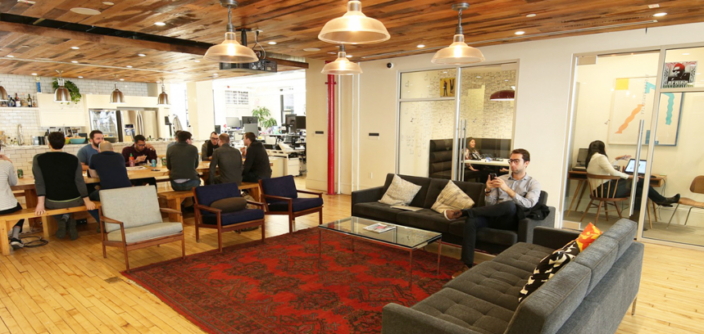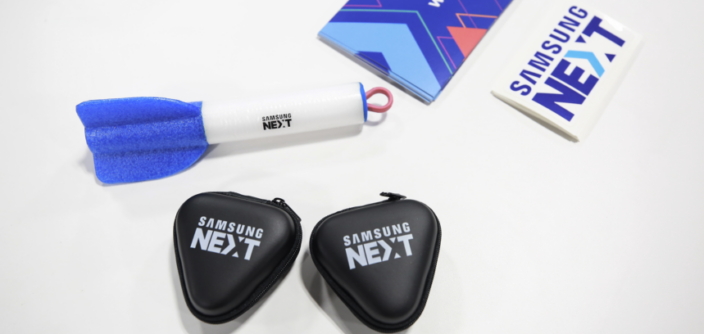[Innovation Feature Part 3] Samsung Nurturing Innovation Spirits
on July 19, 2017

Samsung today is an unquestioned global technology leader – yet, in this complex and competitive global landscape, the company has been embarking on an active course to transform itself, navigating emergent challengers and new technology categories, as it sets course for the future.
A major driver in this transformation has been Samsung’s expansion in Silicon Valley, where the company has had roots for over 30 years. Since 2012, Samsung has been investing heavily to broaden its operations and strategic partnerships in the valley, assembling a cadre of area veterans and innovators to cultivate emerging areas such as AI, health, IoT, and the cloud, and at the macro-level, to transform Samsung’s own organization and operations.
From the decision to expand operations in Silicon Valley, to the current efforts there, to Samsung’s relentless mission to remain at the forefront of technology change, this three-part special feature hears directly from Samsung leaders in the valley on what the company is doing there.
What’s Next for Samsung Silicon Valley

Samsung’s presence in Silicon Valley has come to represent a new way of operation for the company. The traditional Samsung approach had always involved a deliberate examination of a market before the company would introduce a new technology. In contrast, and spearheading the next chapter in Samsung’s growth, Samsung Silicon Valley will remain focused on the pursuit of a radically open style of innovation to drive, as Jacopo Lenzi, senior vice president at Samsung NEXT, shared earlier in this series. “The evolution of Samsung from a hardware manufacturer to a comprehensive tech company that ultimately is focused on delivering experiences and solutions for consumers, beyond devices,” he said.
The approach will be surely, disruptive, and one-rooted in examination, exploration and, at times, error. But it is these learnings and experiences that Samsung leaders firmly believe will help the company not only stay ahead, but continue enormous growth into new areas. “We recognize that the best time to disrupt is during a point of prosperity, not panic,” said Chris Byrne, Head of IP Strategy at SSIC.
So what’s next for Samsung in Silicon Valley? As various Samsung leaders in the valley shared, the movement will very much be around a pursuit of partnerships to drive opportunity coupled with the strategic consolidation of technologies, all intended to infuse a new spirit of openness throughout Samsung.

Partnerships to Drive Opportunity

For the Silicon Valley team, the approach to innovation will continue to be the openness to ideas from anywhere, from inside and outside Samsung. “Partnerships are the difference between winning and losing. You cannot do it by yourself anymore,” said Francis Ho, Head of Digital Health at SSIC.
In the pursuit of partnerships to drive opportunities, Samsung leaders in the valley share a commitment to examining where the latest trends are going, with the end aim simple, to enrich people’s lives. Towards this goal, areas of particular interest like the cloud, AI, smart health, and privacy and security may not be related to current Samsung businesses, but represent future areas of growth for the company. “This is the great challenging experiment—how do we Silicon ‘Valley-ize’ Samsung? How do we make it think and operate like a start-up?” said Chris Byrne.
In practical application, Samsung’s investment arms in the Valley, the Samsung Catalyst Fund and Samsung NEXT Ventures, will continue in their work to discover and engage with new partners. For example, the Catalyst Fund team of just 10 already spends half of their time meeting with startups and entrepreneurs and the other half promoting collaboration with Samsung business units. This approach, underdriven by a spirit of openness to trial and error, won’t change. Brendon Kim, Managing Director of Samsung NEXT Ventures , says that “being bold often means having a strong point of view and vision to invest ahead of the clear opportunity.”.
Also, in their continuing work, the teams will remain committed to persuading internal and outsides stakeholders to think outside and beyond the traditional value proposition of a venture. “We don’t have a 10-year time horizon like typical VCs. We just don’t look at it like they do, with five years to invest and five years to harvest. Our approach is to invest in things that are disruptive and defensible, regardless of the time horizon,” explained Shankar Chandran, Head of the Samsung Catalyst Fund.
Dr. Francis Ho added, “When you are a $200 billion company, everything we touch has a ‘B’. But sometimes, the work we are doing, to truly embrace open innovation, has no ‘B’ yet. So, we have to be very persuasive internally to stay focused and invest.”
Strategic Consolidation of Technologies
In its future work, Samsung leaders in Silicon Valley are also keen in their vision to consolidate across technologies. From vertical platforms for IoT to cloud and data storage to smart machines, the team is looking at ways to cross boundaries, and explore and capitalize on synergy areas.
One example is artificial intelligence. Of course, AI isn’t a new concept. It’s one of the most talked about topics in tech circles, both in the valley and around the world. Yet, the technology is still in its infancy. “AI is still pretty early. We’ve positioned ourselves at the starting line. Now we need to deliver down the line,” said Jacopo Lenzi.
Presently, AI is very transactional, but Samsung leaders view the future of AI in the development of reasoning and planning capabilities – a field they hope to lead precisely by leveraging and consolidating across technologies. With Samsung’s vast portfolio of consumer devices, the company understands human/device interaction better than anybody, and the company has more touch points than any other through which it can bring AI to life. That might mean looking at ways a personal assistant comes to life in VR, for example, as opposed to how it works on a mobile device. “People may not think of us in AI, but we have this user base and portfolio of products with which to work. We want to use AI to make these products work better,” said Nick Cassimatis, who heads the Intelligence Lab at SRA.
Henry Holtzman, who leads work into convergence at SRA, is taking a similar approach to the work he and his team are doing. With more and more networked devices in our pockets, homes and cars, Samsung sees the need to make how consumers interact with devices even more fluid and convenient. “There is real user interface fatigue. Content is disorganized. And different generations consume information and content in different ways — older people interface with Netflix and younger people use Snapchat. So how do we make these gaps less confusing and more convenient?”
Infusing a New Spirit of Openness throughout Samsung

The ultimate aim of both this pursuit of partnerships, as well as consolidation across technologies, is to serve as a new model of openness that Samsung can emulate in how it operates throughout. To help business units no longer just look at the year ahead, but instead focus on long-term ideas that can change the way people live, with work bridging multiple business units. “The goal is getting our various business units to see beyond the next year and understand the impact,” said Shankar Chandran.
The easiest way to accomplish this, of course, will be through real life-results that help Samsung achieve breakthroughs in innovation.
Henry Holtzman shares an example of how several years ago, SRA was challenged to rethink how families shared information and memories. Team members visited homes to see the ways in which people posted information, pictures or notes. What they noticed was that many families had calendars, photos, and messages on their fridges, turning it into a focal point of their everyday lives. This observation led the team to begin early design and concepts that would turn analog information sharing, like paper post-it notes and taped up pictures, and make them digital. The result? Calendar, sticky notes, voice, and camera features that came to life as part of Samsung’s award-winning Family Hub refrigerator. It is precisely this type of innovation and collaboration that the Silicon Valley team envisions being applied across Samsung in the future.
“The common element in this process was advanced concepting, which is a three-year concepting period for developing ideas,” said Holtzman. “After ideas are developed, they head through the innovation system — which includes trusted agencies and accelerators. This is the open innovation community that the Silicon Valley team is fostering.”
The Future is Wide Open
Technological innovation is moving faster than at any time in history, and thanks to Samsung’s efforts in Silicon Valley, the company is better positioned than ever before to be a leader in innovation and transform lives.
“The world will change more in the next five years than it did in the last 50,” says Chris Byrne. “And innovation in the next five years can and will come from anywhere. There are no geographic boundaries on brain power. So, our challenge is to be open—open in terms of how we innovate and open in terms of where innovation will come from.”
Even after working in the technology world for more than two decades, Lenzi said, “No other company has the same reach as Samsung and the opportunity to partner with innovators all over the world to realize Samsung’s vision is why I’m here,” and it is that passion for changing the way people live that will continue to drive Samsung’s efforts in Silicon Valley to achieve new heights for the future.



